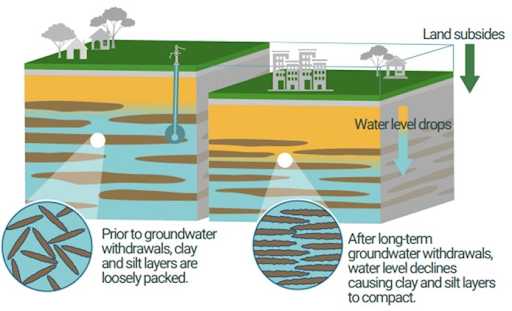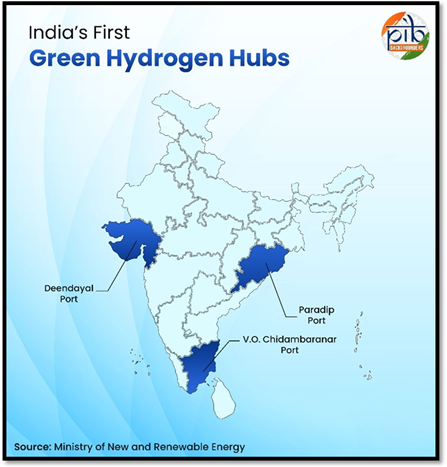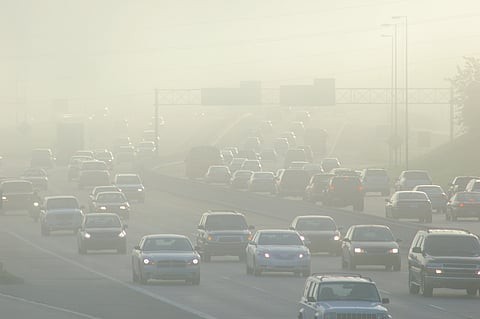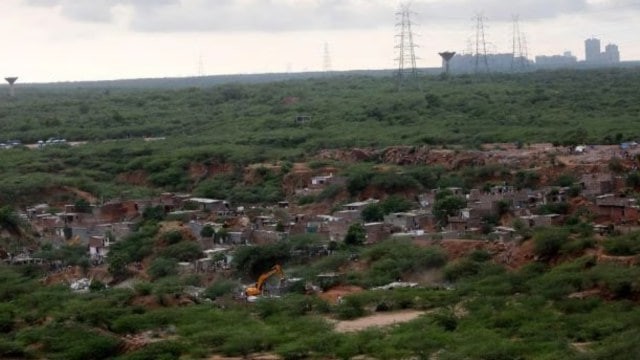



Unchecked groundwater extraction is sinking major cities, weakening infrastructure and heightening flood and saltwater risks. India must urgently regulate borewells, enforce rainwater harvesting, and adopt integrated, science-based water governance with community participation to safeguard urban stability and secure its most vital resource—groundwater.

Copyright infringement not intended
Picture Courtesy: DOWNTOEARTH
A Nature Sustainability study reveals that over-extraction of groundwater is leading to land subsidence in several major Indian cities.
|
Read all about: GROUNDWATER MANAGEMENT IN INDIA l GROUNDWATER CONTAMINATION IN INDIA |
It refers to the gradual or sudden sinking of the Earth's surface.
In urban environments, it most frequently occurs when cities extract large volumes of groundwater from underground aquifers faster than natural processes can replenish them.
When groundwater is extracted, the hydrostatic pressure supporting the soil and rock layers decreases, which causes the land above to subside.

Unlike other geological phenomena, this process is irreversible; the ground does not spring back to its original level once the sediments compact.
India is the world's largest consumer of groundwater, using more than the United States and China combined, due to several interconnected factors.
A recent study in Nature Sustainability highlighted that five major Indian megacities are experiencing urban land subsidence, with sinking rates exceeding four millimeters annually, based on satellite radar data from 2015 to 2023.
Delhi: Highest subsidence rate at 51.0 mm/year, with hotspots in Bijwasan, Faridabad, and Ghaziabad.
Chennai: Subsidence rate of 31.7 mm/year, fastest in Adyar River flood plains.
Mumbai: Subsidence rate of 26.1 mm/year, lower than Delhi or Chennai.
Kolkata: Subsidence rate of 16.4 mm/year.
Bengaluru: Lowest subsidence rate at 6.7 mm/year, benefiting from harder igneous and metamorphic rocks.
Infrastructure Damage
Sinking land damages buildings, roads, bridges, and utilities, causing cracks, buckling, and misaligned drainage, leading to expensive repairs and safety risks.
Increased Flood Risk
Subsidence lowers land elevations, making cities more susceptible to urban flooding, especially in coastal areas and during heavy rainfall events.
It disrupts natural drainage, exacerbating the impact of monsoons and storms.
Coastal Vulnerability
For coastal cities like Chennai and Mumbai, subsidence increases the risk of saltwater intrusion into freshwater aquifers, contaminating drinking water sources and impacting agriculture.
It also makes these areas more vulnerable to sea-level rise and coastal erosion.
Exacerbated Water Scarcity
Aquifer compaction permanently reduces water storage capacity, hindering future groundwater replenishment and intensifying long-term water scarcity.
National Water Policy

Current groundwater laws often fall short in addressing local aquifer variations and socioeconomic realities, impeding effective regulation.
Extensive scale of groundwater extraction, particularly for agricultural purposes, frequently surpasses recharge efforts in numerous regions.
Demand-Side Management
Prioritize reducing water demand through public awareness campaigns, water-efficient appliances, and rational water pricing.
Implementing water-saving agricultural practices, such as micro-irrigation (drip and sprinkler systems) and cultivating less water-intensive crops.
Managed Aquifer Recharge (MAR) and Rainwater Harvesting
Implementing large-scale MAR projects and mandatory rainwater harvesting in all construction will help replenish depleted aquifers and reduce surface runoff.
Strict Regulatory Frameworks
Effective groundwater regulation requires borewell licensing, extraction rate monitoring, and penalties for illegal abstraction.
The outdated Indian Easement Act of 1882, which grants landowners rights to groundwater beneath their property, needs comprehensive reform.
Integrated Urban Water Management
City planning must integrate surface water and groundwater management, treating water as a single resource.
Protecting urban wetlands, lakes, and rivers, which act as natural recharge zones.
Technological Solutions
Advanced monitoring technologies like InSAR (Interferometric Synthetic Aperture Radar) can precisely track land subsidence, providing crucial data for urban planners and early warning systems.
Community Participation
Empowering local communities, as demonstrated by the Atal Bhujal Yojana, is essential for effective groundwater management by promoting ownership and accountability.
To ensure water security and resilience in its growing urban centers, India must proactively implement measures to mitigate land subsidence, as neglecting invisible water resources leads to severe and visible consequences.
Source: DOWNTOEARTH
|
PRACTICE QUESTION Q. Critically evaluate the link between excessive groundwater extraction and the increasing vulnerability of Indian urban infrastructure to disasters. 250 words |
The main objective of ABHY is to improve groundwater management in priority water-stressed areas in identified states through community participation. It focuses on both the demand side (reducing extraction) and the supply side (improving recharge).
JSA is a time-bound, mission-mode campaign that focuses on water conservation and rainwater harvesting. It involves central government officials, scientists, and citizens working together in water-stressed districts to implement interventions like check dams, rejuvenation of traditional water bodies, and afforestation.
NAQUIM is a program implemented by the Central Ground Water Board (CGWB). Its goal is to map the nation's aquifers (underground water-bearing layers), characterize their properties, and develop sustainable management plans tailored to local conditions.







© 2025 iasgyan. All right reserved